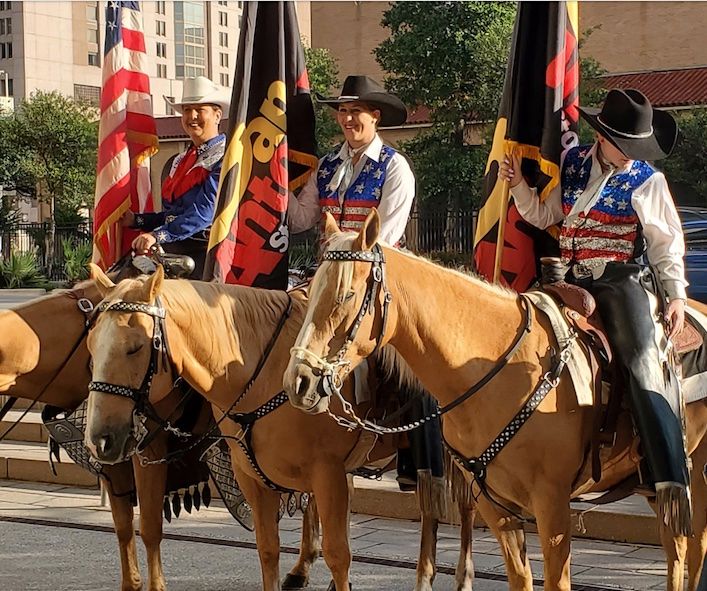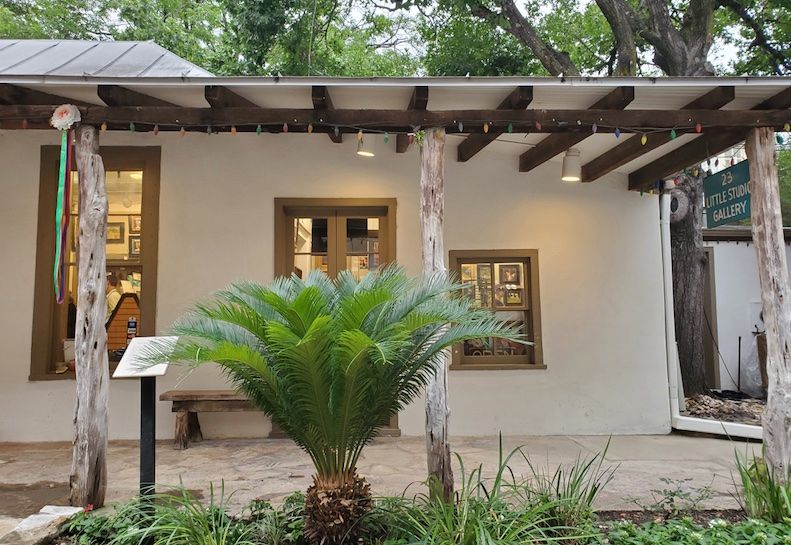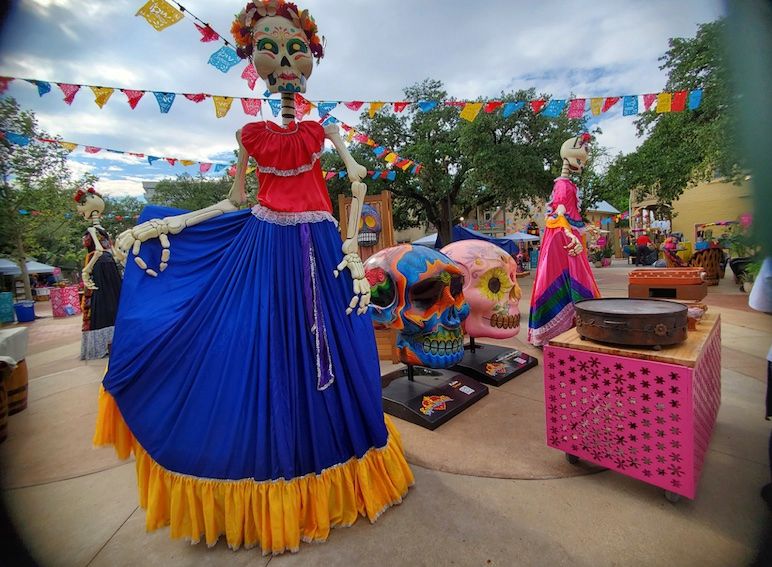El Camino Real de los Tejas was designated a National Historic Trail in 2004.It is currently deemed the hemisphere’s oldest and longest, 2,500-miles, historical route. The DAR placed 128 granite markers, 5-miles apart, in Texas along the Camino Real in 1918 replacing the wooden markers used in 1915. Nine of the original pink granite markers can still be seen in their original locations.

The first Spanish Texas land grant was awarded for the founding of a mission. This 1716 grant was followed by others including parcels of land in San Antonio itself and Mission San Antonio de Valero. Don Antonio Martinez received a grant in 1797 on the southern side of the river in what is now La Villita. His land was used for cattle and his home was just off the Camino Real.
La Villita fell into disrepair and by the 1930s the area was shabby and weed-filled. The houses, though in various stages of disrepair, remained. Mayor Maury Maverick undertook the task of restoring the area highlighting its cultural heritage and architecture. Restored it has become a showcase for eclectic restaurants, craft stores, boutiques, galleries and historic structures.

In 1972 The National Register of Historic Places inscribed La Villita Historic District on the list. The district consists of 27 structures dating from the 19th-century. The buildings are superior examples of vernacular architecture beginning with the Mexican period to Early Texian and German architectural styles. Careful observation as you wind through the are reveals a detailed history of Southwestern architecture and building techniques. Brochures are available for those wishing to take a walking tour of La Villita. The brochures provide information on individual sites, photographs and a detailed map. All of the buildings are significant but there are a number of houses of particular note These edifices have either a unique history or feature exemplary construction techniques.

Do not miss the Cos House, possibly the oldest in the area. It is not named after its original owner but after Mexican General Perfecto de Cos. On December 9, 1935 he signed the Articles of Capitulation, recognizing the defeat of the Mexican Army by the Texians at Bexar. Sixty days later General Santa Anna erected a post abutting La Villita, the site chosen by the Mexicans from which to fire upon the Alamo during the siege.
The Little Church of La Villita’s origins date from 1846 when Reverend J. Vilbiss purchased land across the street and placed a bell to indicate that this was a site for worship. He was unable to erect a church then but in 1879 a Gothic Revival Episcopal Church was built. The lancet-shaped casement windows are of particular note.
Originally owned by the Curbier Family, Rafael Herrera purchased the land on which a house sits in 1854. In 1897 the plot became the property of Thomas Dechman and P. Degnan who had a coffee and spice mill there until 1928. The Herrera/San Martin House was part of the restoration and was named after Don José de San Martín, a South American Freedom Fighter. A feature of the house is a panel located adjacent to the door that displays an example of the construction style used in building the house.
The Tejeda, or Caxias, House is one of the oldest in the district. The land was purchased by the Tejeda Family in 1855 and a city map confirms the existence of a house on the property in the 1870s. There is evidence that the house was erected by Hispanic craftsmen and it is one of only three structures remaining that were constructed using adobe bricks. In contrast the earlier John Bowen 1851 property was built using blocks of caliche.
The centerpiece of the District, Plaza Juarez, was constructed during the restoration and was named in honor of Benito Juarez, a loyal patriot and the 26th president of Mexico. This is the place to really immerse yourself in the culture. There are more than 275 events on the plaza annually including Texas’ Independence from Mexico celebration. “A Night in Old San Antonio,” a signature event, has grown from one-day to four with 15-themed areas. Dates for 2024 are April 23 -26. Party like it’s 1829.

 Extended Weekend Getaways
Extended Weekend Getaways